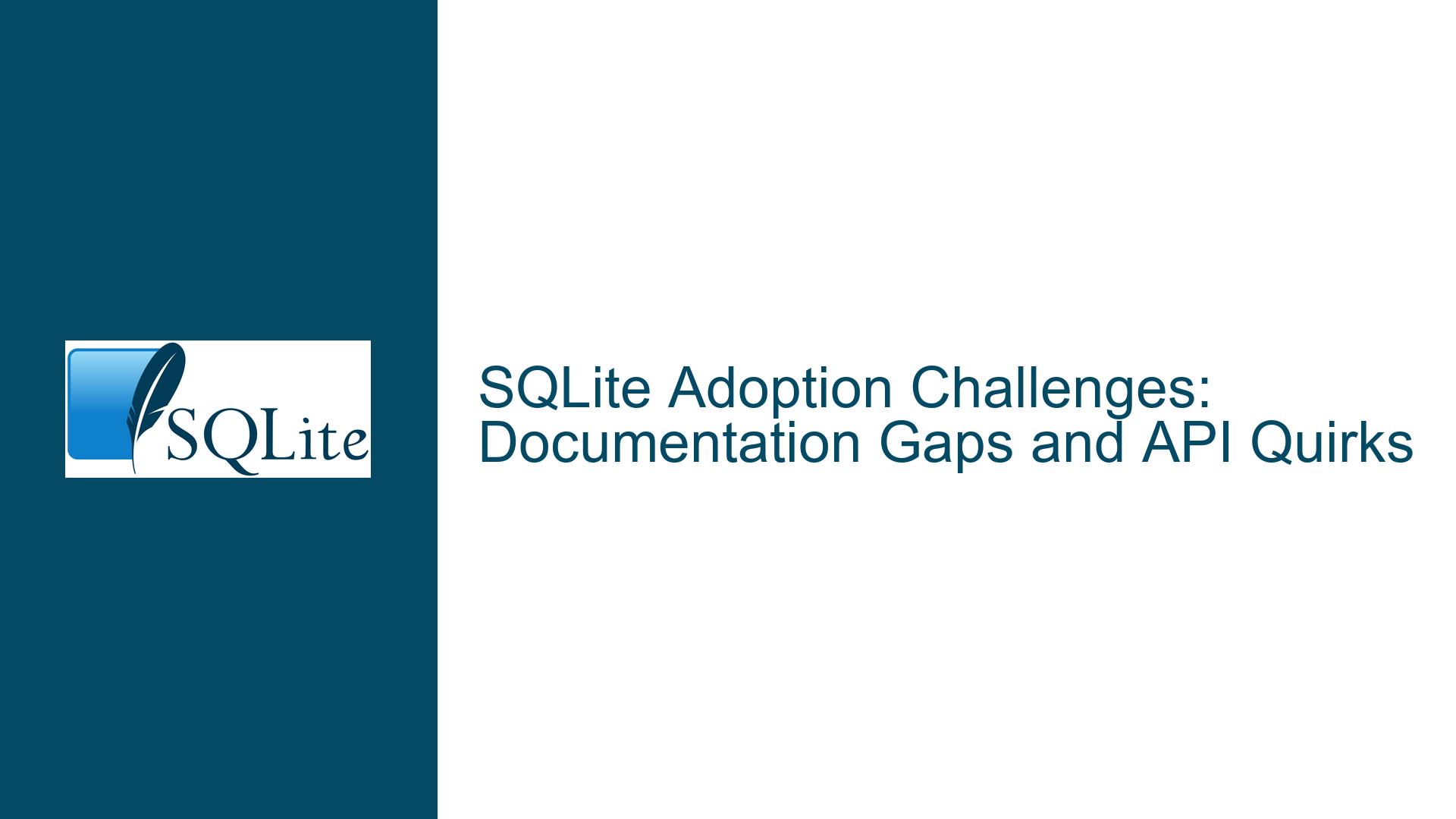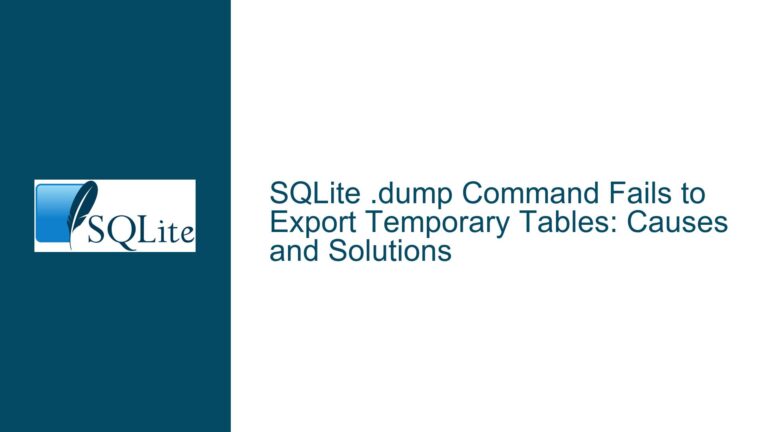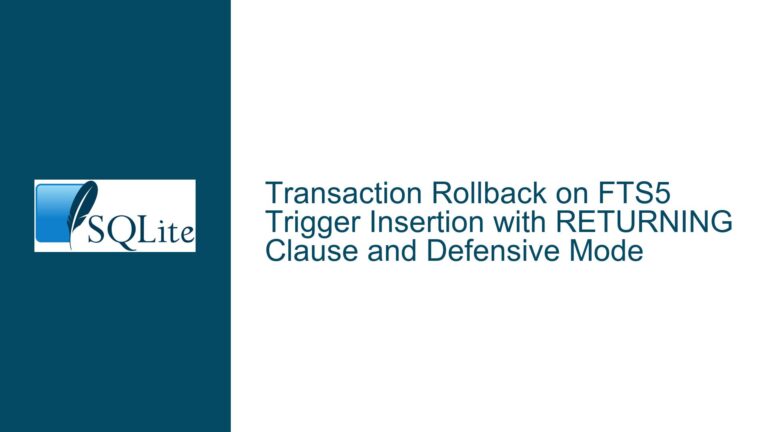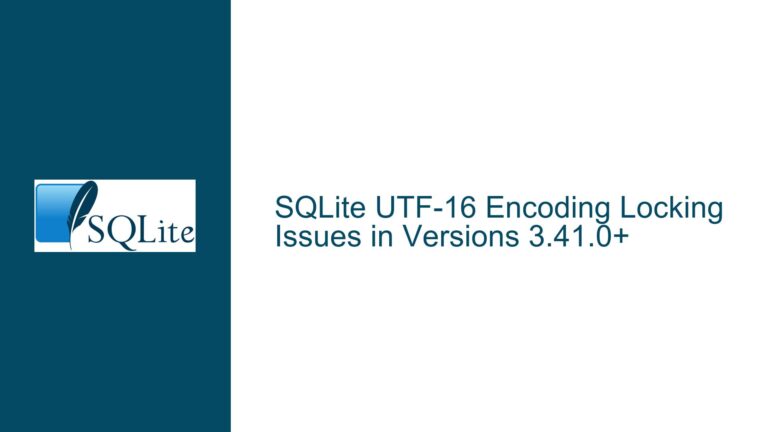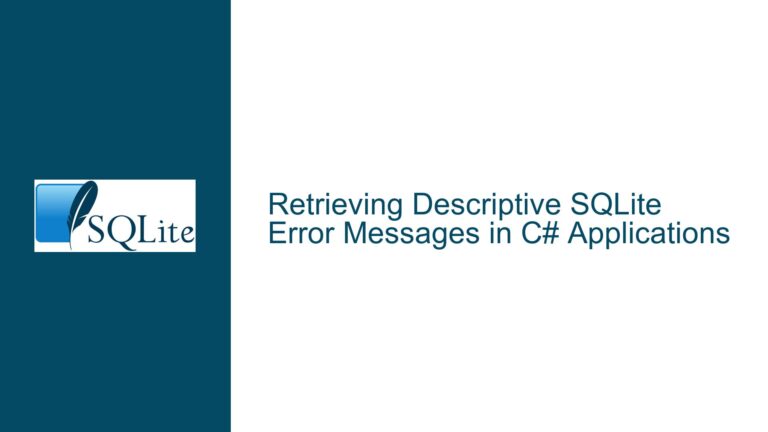SQLite Adoption Challenges: Documentation Gaps and API Quirks
SQLite’s Steep Learning Curve and Documentation Gaps
SQLite is a powerful, lightweight, and widely-used database engine that has become a cornerstone for many applications, from embedded systems to mobile apps. However, despite its versatility and robustness, SQLite faces significant adoption challenges, primarily due to its steep learning curve and documentation gaps. The official SQLite documentation, while comprehensive, is often criticized for being overly terse and lacking practical examples. This makes it difficult for developers, especially those new to SQLite, to quickly grasp how to implement solutions effectively.
The absence of worked examples or pseudo-code in the documentation is a recurring pain point. While the documentation provides authoritative and detailed explanations of SQLite’s features, it often assumes a high level of prior knowledge. This can be particularly challenging for developers transitioning from other relational database management systems (RDBMS), where the paradigms and best practices may differ significantly. For instance, SQLite’s in-process library nature means that it operates differently from client-server databases, and this distinction is not always clearly articulated in the documentation.
Moreover, the lack of platform-specific examples exacerbates the problem. Developers often need to deploy SQLite in diverse environments, such as mobile apps, desktop applications, or embedded systems. However, the documentation does not provide tailored examples for these scenarios, leaving developers to piece together solutions from generic descriptions. This can lead to suboptimal implementations and a reliance on trial-and-error, which is time-consuming and frustrating.
The SQLite forum, while a valuable resource, is not a substitute for well-structured documentation. The forum is often the only place where developers can find practical advice and solutions, but it requires significant effort to sift through discussions and extract useful information. Additionally, the forum’s tone can sometimes be perceived as patronizing, which may deter less experienced developers from seeking help.
In summary, SQLite’s steep learning curve and documentation gaps are significant barriers to its broader adoption. While the library itself is highly capable, the lack of practical examples and platform-specific guidance makes it challenging for developers to harness its full potential. Addressing these issues through improved documentation and more accessible learning resources could significantly enhance SQLite’s usability and appeal.
API Inconsistencies and Behavioral Quirks
One of the most frequently cited challenges with SQLite is the inconsistency in its API behavior and the presence of various quirks that can trip up even experienced developers. These issues are particularly problematic because they often lead to subtle bugs and unexpected behavior, which can be difficult to diagnose and resolve.
A prime example of API inconsistency is the difference between sqlite_open() and sqlite_open_v2(). The former does not report faults that prevent the opening of a database file, making it unreliable for robust applications. Developers are therefore advised to use sqlite_open_v2(), which provides better error reporting and more control over the opening process. However, this inconsistency is not immediately obvious to newcomers, who may not realize the importance of using the _v2 version until they encounter issues.
Similarly, sqlite_close_v2() exhibits problematic behavior. Despite its name, this function does not always close the database file and may fail to release resources associated with the handle. Even more confusingly, it returns SQLITE_OK even when it fails to close the file properly. This can lead to resource leaks and other issues if developers assume that a successful return code means the file was closed correctly. To work around this, developers must implement additional checks to ensure that resources are properly released, adding complexity to their code.
Another area of concern is SQLite’s handling of autoincrement indexes. Unlike many other databases, SQLite allows NULL values in autoincrement columns, which can lead to unexpected behavior if not handled carefully. This is particularly problematic in scenarios where autoincrement columns are used as primary keys, as it can result in duplicate or invalid entries.
SQLite’s lack of a native date/time type is another common source of frustration. While SQLite provides functions for working with dates and times, developers must store these values as strings, integers, or real numbers, which can lead to inconsistencies and errors if not managed properly. This is especially challenging in applications that require precise date/time handling, such as financial or scheduling software.
The database’s handling of journal and shared memory modes also introduces complexity. Different modes have different behaviors and failure modes, and choosing the wrong mode can lead to performance issues or data corruption. For example, the WAL (Write-Ahead Logging) mode offers significant performance benefits but requires careful management of shared memory files. If these files are not properly handled, it can lead to database corruption or other issues.
Finally, SQLite’s default behavior of disabling foreign key constraints can be problematic. Even if a table in the database uses foreign keys, they are not enforced unless explicitly enabled. This can lead to data integrity issues if developers are unaware of this behavior or forget to enable foreign key constraints.
In summary, SQLite’s API inconsistencies and behavioral quirks present significant challenges for developers. These issues can lead to subtle bugs, unexpected behavior, and increased complexity in code. Addressing these quirks through clearer documentation, more consistent API behavior, and better default settings could greatly improve the developer experience and reduce the likelihood of errors.
Strategies for Overcoming SQLite’s Challenges
Despite the challenges posed by SQLite’s steep learning curve, documentation gaps, and API quirks, there are several strategies that developers can employ to overcome these issues and make the most of this powerful database engine. These strategies include leveraging community resources, adopting best practices, and using tools and techniques to mitigate the impact of SQLite’s quirks.
Leveraging Community Resources
One of the most effective ways to overcome SQLite’s documentation gaps is to tap into the wealth of knowledge available in the community. The SQLite forum is a valuable resource where developers can ask questions, share solutions, and learn from others’ experiences. While the forum can be intimidating for newcomers, it is worth the effort to engage with the community and seek help when needed.
In addition to the forum, there are numerous blogs, tutorials, and open-source projects that provide practical examples and insights into using SQLite effectively. These resources can help bridge the gap between the official documentation and real-world use cases, providing developers with the guidance they need to implement solutions quickly and efficiently.
Adopting Best Practices
Adopting best practices is essential for minimizing the impact of SQLite’s quirks and ensuring robust, reliable applications. Some key best practices include:
- Always use
sqlite_open_v2()instead ofsqlite_open(): This ensures better error reporting and more control over the database opening process. - Implement additional checks when using
sqlite_close_v2(): To avoid resource leaks, developers should verify that the database file is properly closed and resources are released. - Avoid
NULLvalues in autoincrement columns: This helps prevent unexpected behavior and ensures that autoincrement columns function as intended. - Use appropriate date/time storage formats: Developers should choose a consistent format for storing date/time values and use SQLite’s date/time functions to manipulate these values.
- Enable foreign key constraints explicitly: This ensures that foreign key constraints are enforced, maintaining data integrity.
Using Tools and Techniques to Mitigate Quirks
There are several tools and techniques that developers can use to mitigate the impact of SQLite’s quirks and improve the overall development experience:
- PRAGMA statements: SQLite’s PRAGMA statements provide a way to configure various aspects of the database’s behavior. For example,
PRAGMA foreign_keys = ONcan be used to enable foreign key constraints, andPRAGMA journal_mode = WALcan be used to enable Write-Ahead Logging for improved performance. - Database backup and recovery: Regular backups are essential for protecting against data loss and corruption. SQLite provides several mechanisms for backing up and restoring databases, including the
.backupand.restorecommands in the SQLite shell. - Testing and validation: Thorough testing is crucial for identifying and resolving issues related to SQLite’s quirks. Developers should implement unit tests, integration tests, and stress tests to ensure that their applications behave as expected under various conditions.
- Using wrappers and ORMs: For developers working with high-level programming languages, using a wrapper or ORM (Object-Relational Mapping) library can simplify interactions with SQLite and reduce the likelihood of errors. Libraries such as SQLAlchemy (Python) or Entity Framework (C#) provide abstractions that handle many of SQLite’s quirks automatically.
Conclusion
While SQLite presents several challenges, including a steep learning curve, documentation gaps, and API quirks, these issues can be overcome with the right strategies and tools. By leveraging community resources, adopting best practices, and using techniques to mitigate quirks, developers can harness the full potential of SQLite and build robust, reliable applications. With its lightweight nature, cross-platform compatibility, and powerful features, SQLite remains an invaluable tool for a wide range of use cases. By addressing its challenges head-on, developers can unlock its full potential and take their applications to the next level.
